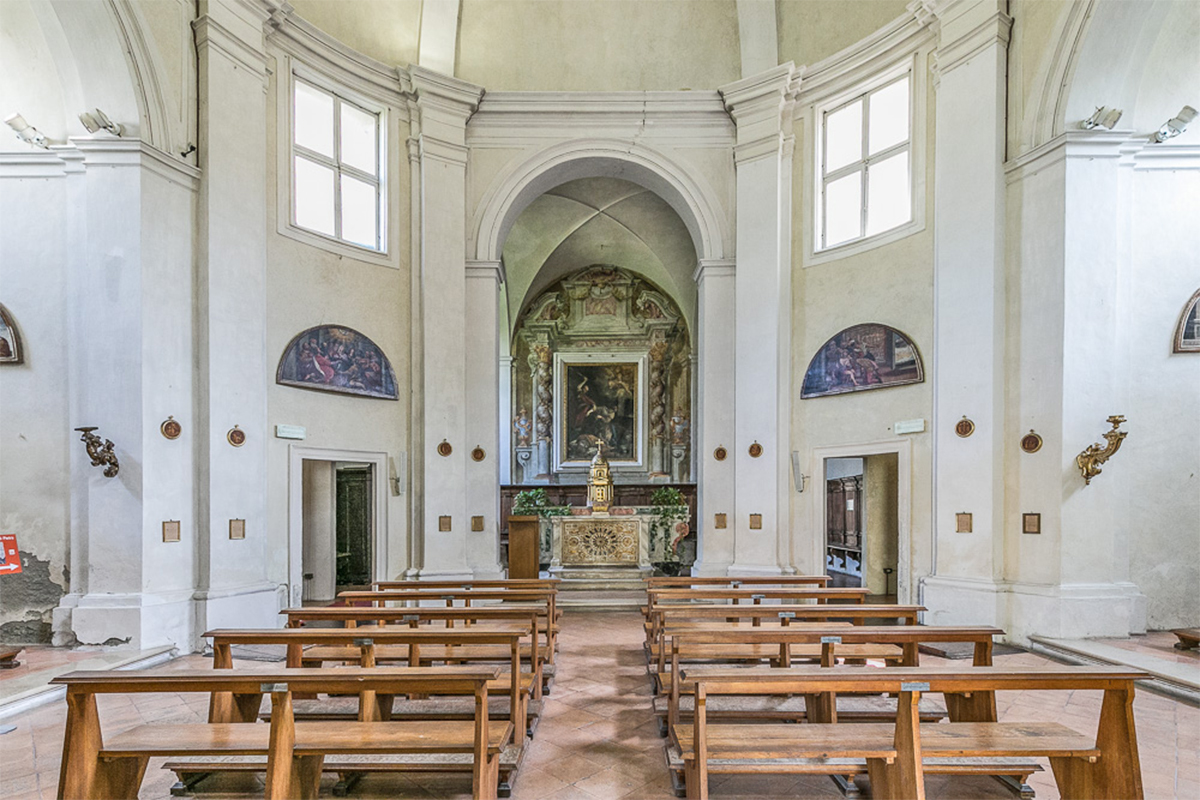Nestled amidst buildings in Via Barbieri and preceded by a small garden stands the CHURCH OF SANTA EUFEMIA, a modest building hiding a rich and fascinating history.
A bit of history
According to the tradition, this church was the first one to be build in Ravenna and in the whole Po valley area. Here, St. Apollinaris would have administered the sacraments and brought from Aquileia the spoils of Saint Euphemia from Calcedonia.
Sources report at least three different religious buildings linked to Saint Euphemia in Ravenna, and it is thus difficult to identify them. In the sacristy there is a small well with an 18th-century inscription confirming it: “coepit hic fides ravennatium”, or “Here began the faith of the people of Ravenna”.
The present building was built between 1742 and 1747 in late Baroque style, on a design by the architect Giovanfrancesco Buonamici from Rimini and on the foundations of a former three-nave church about which there is no realiable information.
The church also has a small bell tower housing one of the oldest bells in the city, used continuously since its forging in 1358.
Since October 2002, the building has been the entrance to the archaeological site of the Domus of the Stone Carpets, discovered by chance 3 metres below street level, during works for the construction of an underground car park.
The interiors
The actual round-shape church has three different altars – a main one, and two side ones. One of these ones covers a well from which, according to legend, St. Apollinaris drew water to baptise the first converts in Ravenna.
Behind the main altar, it is possible to admire a painting by Antonio Burrini commissioned in 1686 on the occasion of the discovery of Saint Euphemia’s and Saint Agata’s spoils. The painting depicts the death of the saint to whom the church is dedicated, and the so-called sacristy of the “Hundred Priests” named after the congregation that used to meet there.
18th-century canvases by Andrea Barbiani and Giovanni Capaci embellish the side chapels and the sacristy. The former painted St. Apollinaris baptising the tribune, while the latter is the author of the Annunciation (1747) and the Visitation.







